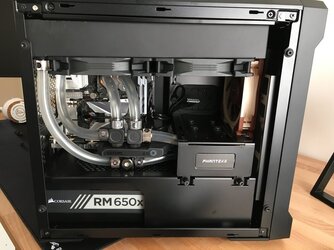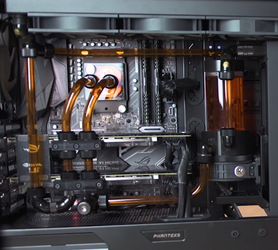- Joined
- Jan 27, 2019

I was surfing a new website for builds when I saw this. Looks like a 3 way split was used to supply both the cpu and gpu intake/outake. I imagine this will impeded flow to either one that has the most resistance, like bypassing the cpu and just the majority of the water going thru gpu.
Im not trying to mock this person, just seemed off to me. If Im going to warn him something is wrong I want to be educated as to why.
